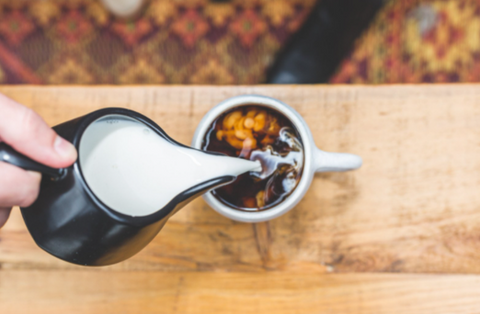We are living in a society where alternative milk options are an expectation at most hospitality businesses. The plant-based movement is rapidly growing throughout Australia and at most café’s, having several alternatives to dairy milk is becoming the norm. Without catering to the expectation of plant-based milks, café’s are closing the doors to large markets and sales growth, so we’re here to tell you how to provide alternative milks properly!

Selecting which Milks to Offer
Don’t just jump into all the different alternatives, as often you will only need 2 to 3 options. With so many milks available, it can be hard to decide which ones you will need.
You must choose between almond, soy, macadamia, rice, coconut, cashew, hemp, and oat.
From our experience, most businesses offer soy and almond milk at a minimum and this works. Our recommendation is to start with soy and almond milk, and then increase your offerings if your demand is high enough. Your customers will be asking if you supply a specific type of milk, so make sure to listen if many of your regulars request macadamia milk.
Choosing the Right Milk
Unfortunately, alternative milks work differently to dairy milk, leaving the barista with a few obstacles to face to get that perfect, creamy cappuccino!
You may already know that many alternative milks don’t react well to the acidity of coffee, causing challenges from milk splitting and curdling. We recommend trying a few different styles of each milk you decide to offer, to see which milk has the flavour and capacity to work best with your coffee.
Some almond milks have strong flavour, while others are barely noticeable. Choosing the wrong milk can ruin the flavour profile of your coffee, leaving the customer with a bad cup. Some soy milks are sugary sweet, while others remain mellow in flavour. How these milks interact with your coffee will depend on the coffee you use, so trial and error is key.

Stretching the Milk
Plant based milks are more sensitive to temperature than dairy milk, causing the proteins to split when too hot. Steaming the milk at a lower temperature and allowing less air into the milk than with dairy will reduce the likelihood of proteins splitting.
Unfortunately, this doesn’t make catering for customers who order an “extra extra extra hot flat white” the easiest of tasks. When this occurs, the barista is faced with a trade off between achieving the temperature requested and destroying the milk. So, make sure to heat up your coffee cup before you pour the milk, to avoid perceptions of the coffee being cold!

Using Plant Based Milks to your Advantage
Selecting the right plant based milks can improve the experience of your customers. Pairing an almond milk to your hot chocolate offering can create a nice nutty flavour or ruin your chocolate flavour entirely.
Choosing plant-based milk alternatives that are locally sourced provides your business with good customer relations. By sourcing locally made milks, you are contributing to local jobs and showing your customers that you source quality products.
Make sure your barista is using safe food practices while preparing drinks with alternative milks. Using the same milk jug for a soy cappuccino that was just used to make an almond milk latte can very put someone with a nut allergy in serious danger.
We recommend using the milk I.D clips on milk jugs. Not only do the help the barista to keep track of what was used where, they also show your customers that your business takes food practices seriously.
You can see the milk ID Clips HERE

